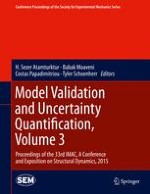2015 | OriginalPaper | Buchkapitel
32. Comparison of FRF Correlation Techniques
verfasst von : Timothy Marinone, Adam Moya
Erschienen in: Model Validation and Uncertainty Quantification, Volume 3
Aktivieren Sie unsere intelligente Suche, um passende Fachinhalte oder Patente zu finden.
Wählen Sie Textabschnitte aus um mit Künstlicher Intelligenz passenden Patente zu finden. powered by
Markieren Sie Textabschnitte, um KI-gestützt weitere passende Inhalte zu finden. powered by
